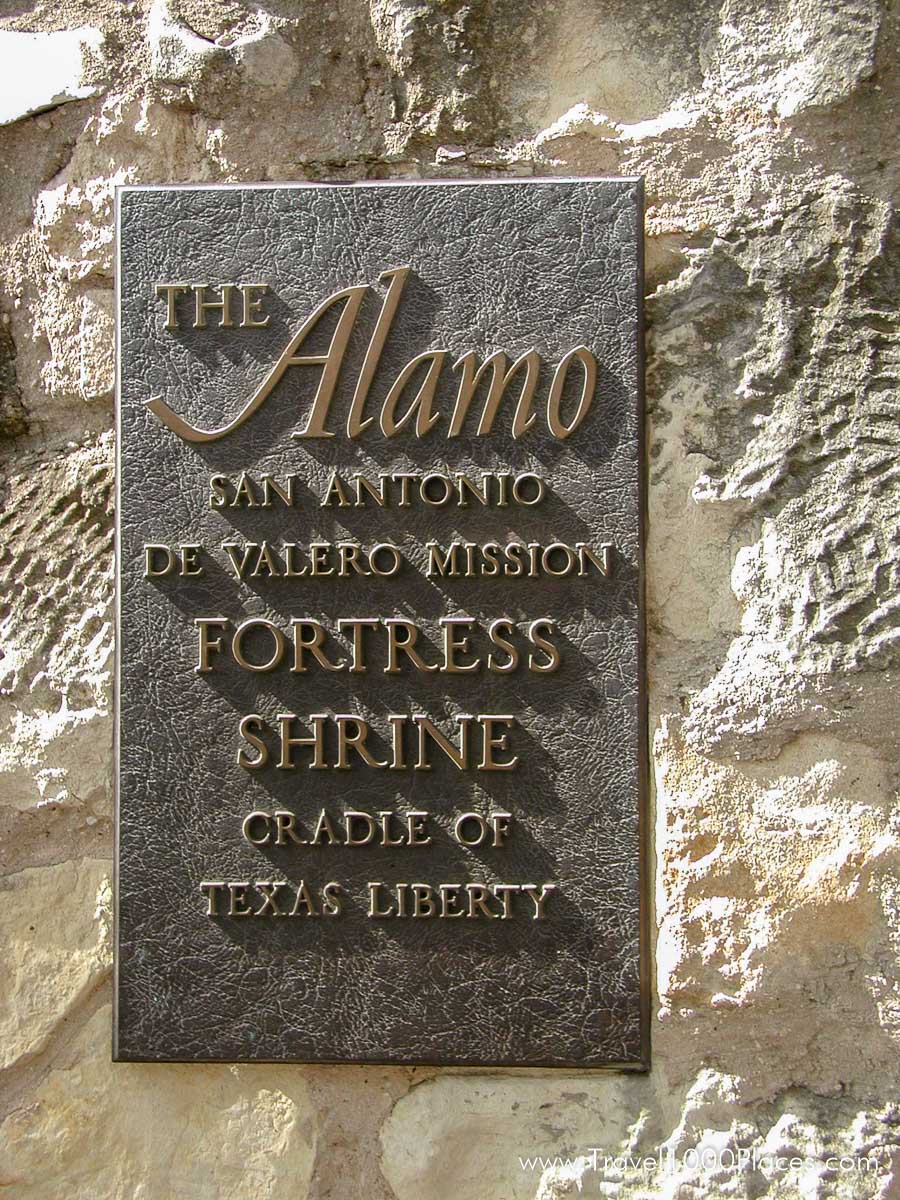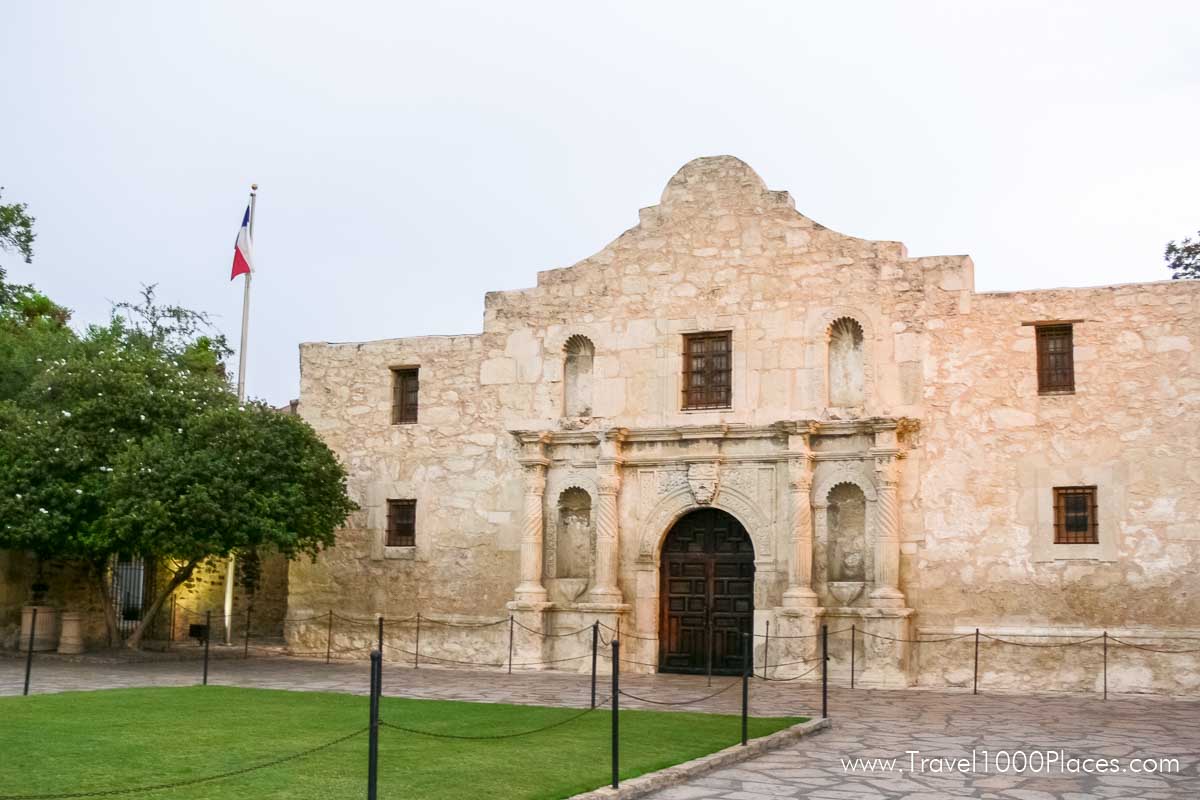The Alamo, Mission San Jose, Mission San Juan Capistrano, Mission Nuestra Senora de la Purisma Concepcion de Acuna, Mission San Francisco de la Espada

Read more: San Antonio, Texas — Overview for Travelers
San Antonio Missions
Spanish conquistador’s came to Texas in the 17th century in search of wealth and treasures in the new ‘kingdom.’
In 1690, another group of Spaniards, the Franciscan friars, journeyed to the new frontier and founded some of the earliest of 38 missions established in Texas. San Antonio was the site of five of these classic church communities that brought Christianity to the Native Americans of the Southwest. Each mission consisted of the church, a granary, Indian quarters, textile shops, a blacksmith and tannery, irrigated farmlands and a ranch. Some also had a mill, fruit orchards, grape arbors and other economic advantages necessary for survival on the northern frontier.
Except for the Alamo, all of the missions are active parish churches and are included in the San Antonio Missions National Historical Park. San Antonio is one of the few urban areas in the United States that has a national park included within its city limits. While all of the sites are representative of the Spanish colonization effort in North America, the National Park Service has assigned interpretive themes to each of the four missions contained in the park. Park interpreters emphasize one or more aspects of the missionization process at each site.
An excellent way to start your visit to the missions is to stop at the visitor center located at 6701 San Jose Drive, adjacent to Mission San Jose. Interactive displays and a state-of-the-art theater showing an award-winning film provide background on the mission era in San Antonio.
Web: San Antonio Missions National Historical Park (U.S. National Park Service) (nps.gov)
The Alamo

Mission San Antonio de Valero, popularly known as the Alamo, was the earliest of the chain of San Antonio missions, established in 1718. Today it is recognized as ‘The Cradle of Texas Liberty,’ a symbol of freedom and independence throughout the world.
This mission was the site of an infamous battle that ended on March 6, 1836, and kindled Texas’ desire for freedom.
One hundred and eighty-nine Texas patriots met Mexican General Antonio Lopez de Santa Anna during the Battle of the Alamo. Although all 189 men died, Texas’ fight for freedom had just begun.
The actual founding of the city came in 1718 by Father Antonio Olivares when he established Mission San Antonio de Valero, which became permanently etched in the annals of history in 1836 as The Alamo, where 189 defenders held the old mission against some 4,000 Mexican troops for 13 days.
The cry ‘Remember the Alamo‘ became the rallying point of the Texan revolution against Mexico.
Located in the heart of downtown, today The Alamo is a shrine and museum.
Mission San Jose y San Miguel de Aguayo
![Mission San José Church [photo: NPS]](https://www.travel1000places.com/wp-content/uploads/2022/05/nps-MissionSanJoseChurch_1500x1125-1200x900.jpg)
![Church Facade of Mission San José [photo: NPS]](https://www.travel1000places.com/wp-content/uploads/2022/05/nps-Church-Facade-of-Mission-San-Jose_800x1123.jpg)
The interpretive theme of Mission San Jose, established in 1720, is ‘The Mission as a Social Center and as a Center for Defense.’
To commemorate the Texas Centennial in 1936, federal and state agencies combined efforts to reconstruct the surrounding compound and portions of the parish church to its former image of ‘Queen of the Texas Missions.’
This mission became the most beautiful, most prosperous and the best fortified of all the San Antonio missions.
The facade and other carvings on the church are among its most notable features. The famous ‘Rosa’s Window,’ although weathered by time, is considered to be one of the finest pieces of Spanish Colonial ornamentation in the country.
Other features include the granary, 84 compartments that served as Indian quarters, an immense quadrangle enclosure and a restored gristmill that houses an original horizontal water wheel.
Although San Jose is the most complete in appearance, each of the missions has a beauty and history of its own.
Mission Nuestra Senora de la Purisma Concepcion de Acuna
![A panoramic view of Mission Concepción Church [photo: NPS]](https://www.travel1000places.com/wp-content/uploads/2022/05/nps-A-Panoramic-View-of-Concepcion_15004x694-1200x555.jpg)
Mission Concepcion, whose interpretive theme is “The Mission as a Religious Center,” is one of the oldest unrestored stone churches in the United States.
The mission was established in 1731, and the present stone church took more than 20 years to complete.
Its massive twin towers still show traces of the brightly colored paintings that were used to attract the Indians to the missions.
Visible on the inside of the friary are original 18th century wall paintings illustrating colors that have been dramatically brought back to life through a recent National Park Service paint conservation effort.
Mission San Juan Capistrano
![Mission San Juan Capistrano before 2013 preservation and restoration [photo: NPS]](https://www.travel1000places.com/wp-content/uploads/2022/05/nps-Mission-San-Juan-Capistrano1500x844-1200x675.jpg)
![Mission San Juan Capistrano after major preservation and restoration in 2013 by the Archdiocese of San Antonio. [photo: NPS]](https://www.travel1000places.com/wp-content/uploads/2022/05/nps-Mission-San-Juan-Capistrano-after-major-preservation-and-restoration-in-2013_1500x1000-1200x800.jpg)
Mission San Juan, moved to San Antonio in 1731 from an earlier location in East Texas, never saw the completion of its stone church.
In the chapel are rare figures of Christ and the Virgin made of cornstalk pith.
Today, the original friary serves as a museum that displays artifacts from the active days of the mission. San Juan’s interpretive theme is “The Mission as an Economic Center.” Within the walls, most of the original compound is preserved, giving an authentic picture of the Spanish Colonial mission plan.
Outside the enclosure, a designated nature trail that parallels a section of the original San Antonio River channel recreates a rural atmosphere perhaps not unlike the agrarian setting visible in earlier centuries.
Mission San Francisco de la Espada
![Mission Espada Church [photo: NPS]](https://www.travel1000places.com/wp-content/uploads/2022/05/nps-Mission-Espada-Church_821x1000.jpg)
‘The Mission as a Vocational Education Center’ is the interpretive theme of Mission Espada.
One of the early East Texas missions founded in 1690, Espada was relocated to San Antonio in 1731. By 1778, however, the original adobe church structure was in ruin; the principal stone church was never completed.
The chapel as we know it today, built originally as the sacristy for the stone church but later converted into the present structure, dates from about 1884.
The Moorish-styled, arched doorway, however, dates from about 1780 and represents some of the chapel’s most original fabric. The Espada Aqueduct, which carries water from the San Antonio River across Piedras Creek, continues to feed the original mission irrigation system. Espada Dam, built between 1731 and 1740, is the best existing example of the four Franciscan-designed dams placed on the San Antonio River. The dam is still in use today.
Combined, these structures represent perhaps the best surviving physical assembly of an18th century Spanish irrigation network in the United States.

